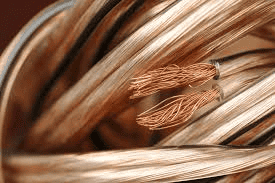Copper is a malleable metal that is very good at conducting heat and electricity, and it is an element in Group 11 on the periodic table. As a metal, copper is found naturally in air, water, and soil but is usually mined and smelted. Copper is used for building materials, electrical wiring, heat exchangers, and industrial machinery.

Copper is used in alloys for construction, jewellery, and decorative uses. In some alloys, copper is mixed with nickel and zinc to increase conductivity. Some of these copper alloys include bronze, sterling silver, and cupronickel. When heated, liquified copper turns pink. However, this colour is not permanent and can change to green when it interacts with oxygen.
Copper is highly malleable and resistant to oxidation, which makes it useful for many applications. For example, copper is used as a heat exchanger, a metal for jewellery, and as an electrolyte. You’ll also find copper is popular for use in plumbing pipes. For details on Copper Pipe Connectors, go to watkinspowis.co.uk/products/copper-pipe-fittings-and-press-systems
Pure copper is a soft, reddish-orange metal that is very malleable. This property of copper allows it to be shaped into thin plates or even thin sheets. Copper is also used to make various alloys, including brass, an alloy of copper, and zinc. Copper can be used to manufacture door handles and other decorative items.

Copper is not soluble in most acids, but it dissolves in sulphuric and nitric acid, which contain oxygen. The dissolved copper can then be extracted by electrolysis. During electrolysis, the ions are repelled from the metal by a chemical reaction with the oxide. The repulsion causes the formation of a thin layer of tarnish, giving the metal a unique colour.
Copper is also a good conductor of a wide range of frequencies. Various copper compounds are used in analytical chemistry, fungicides, and wood preservatives. Biologically, the ions of copper are essential for breaking down proteins in single-celled organisms. These ions can be a source of animal toxicity, causing them to die quickly.
Copper is an essential trace element in human health; the body absorbs it, and too much can lead to copper poisoning. Most copper compounds from agriculture and other natural sources settle in water sediments. If the concentration of copper exceeds the acceptable limits, it can harm the health of animals.
Unlike most other metals, copper corrodes very slowly when exposed to moisture. However, copper reacts with oxygen to form a protective layer called the patina, which protects the metal from further oxidation.
